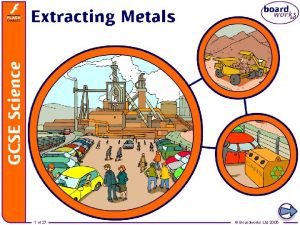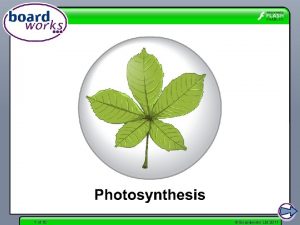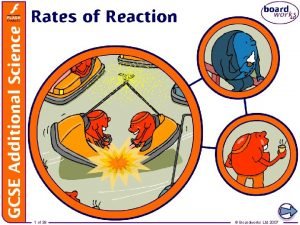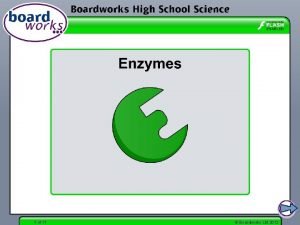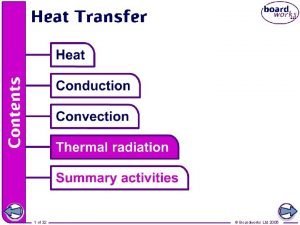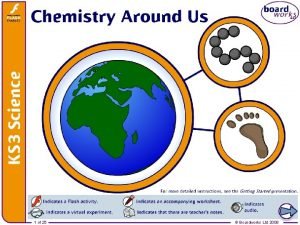1 of 11 Boardworks Ltd 2012 What are

1 of 11 © Boardworks Ltd 2012

What are enzymes? Enzymes are biological catalysts – they speed up the chemical reactions that take place inside all cells, but without being used up in the process. There are many thousands of different types of enzyme, and each one catalyzes a different reaction. Enzymes occur naturally in all organisms, but they are increasingly being used in industrial processes. 2 of 11 © Boardworks Ltd 2012

Why do enzymes speed up reactions? Enzymes speed up reactions by lowering the activation energy (Ea) of a reaction. The activation energy is the energy needed to start a reaction. Different reactions have different activation energies. energy (k. J) Ea without enzyme Ea with enzyme reaction (time) 3 of 11 © Boardworks Ltd 2012

Why is shape important? The shape of an enzyme is very important because it has a direct effect on how it catalyzes a reaction. Why do enzymes have different shapes? An enzyme’s shape is determined by the sequence of amino acids in its structure, and the bonds which form between the atoms of those molecules. Different types of enzymes have different shapes and functions because the order and type of amino acids in their structure is different. 4 of 11 © Boardworks Ltd 2012

Why are enzymes so specific? Enzymes are very specific about which reactions they catalyze. Only molecules with exactly the right shape will bind to the enzyme and react. These are the reactant, or substrate, molecules. The part of the enzyme to which the reactant binds is called the active site. This is a very specific shape and the most important part of the enzyme. 5 of 11 © Boardworks Ltd 2012

What happens at the active site? In the same way that a key fits into a lock, so a substrate is thought to fit into an enzyme’s active site. The enzyme is the lock, and the reactant is the key. ↔ + enzyme + reactant 6 of 11 ↔ ↔ enzyme-reactant complex + ↔ enzyme + products © Boardworks Ltd 2012

The lock and key model 7 of 11 © Boardworks Ltd 2012

Factors affecting enzymes The rate of enzyme-catalyzed reactions depends on several factors. What are some of these? Factors that affect the rate of a reaction include: l temperature l substrate concentration l p. H l surface area l enzyme concentration l pressure. All enzymes work best at only one particular temperature and p. H: this is called the optimum. Different enzymes have different optimum temperatures and p. H values. 8 of 11 © Boardworks Ltd 2012

Factors affecting enzymes If the temperature and p. H changes sufficiently beyond an enzyme’s optimum, the shape of the enzyme irreversibly changes. This affects the shape of the active site and means that the enzyme will no longer work. When this happens the enzyme is denatured. heat p. H normal 9 of 11 denatured © Boardworks Ltd 2012

Enzymes and temperature 10 of 11 © Boardworks Ltd 2012

Enzymes: true or false? 11 of 11 © Boardworks Ltd 2012
- Slides: 11

